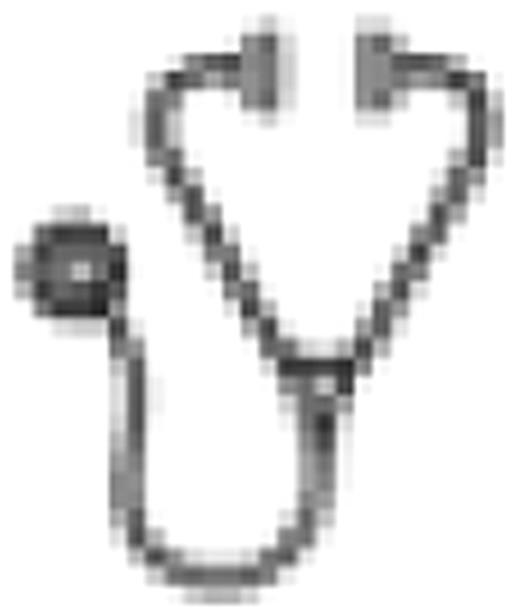Abstract
Abstract 2369
Matched sibling (SIB) hematopoietic cell transplantation (HCT) has become an established treatment option in first complete remission of AML with high risk cytogenetic aberrations by donor versus no donor comparisons. Comparable evidence for matched unrelated donor (UD) HCT is lacking and selection of a matched UD has been considered as a risk factor based on retrospective studies. However, in some more recent studies, elderly patients and patients with high risk AML who had a matched UD had a trend to better survival compared to patients with matched sibling donors. This observation led to the hypothesis that elderly patients could even benefit from the selection of a young male UD compared to an old sibling donor – especially if an unfavourable sex mismatch is present. Therefore, we sought to determine the role of UD HCT in high risk AML by comparing the outcome of patients with SIB HCT to patients with matched or partially matched UD HCT.
We performed a retrospective cohort analysis in patients with AML according to WHO criteria and high risk cytogenetic aberrations according to modified CALGB 2002 criteria who received allogeneic HCT between 01/2005 and 12/2008. Centers in which high resolution typing for HLA-A, -B, -C and DRB1 for all non-sibling HCTs was standard were invited to include patients. Patients who received a second allogeneic HCT or haploidentical HCT were excluded. Comorbidities at HCT were retrospectively assessed with the HCT-specific comorbidity index. We used multivariate Cox regression modelling for OS and PFS while competing event statistics were applied for NRM and RI. Besides donor type the potential confounders age, comorbidities (HCT-CI), Karnofsky performance status and delay between diagnosis and HCT were entered a priori into the multivariate models for OS and PFS. Additional variables were tested by stepwise backward selection based on the likelihood ratio test.
Six transplant centers contributed data on 301 patients with AML. The median age was 56 years (range, 21 to 77 years). 77% of the patients received allogeneic HCT as part of firstline treatment whereas 23% of patients were transplanted after relapse. At HCT 59% of the patients were in a morphologic leukemia-free marrow state and 31% of patients had residual blasts prior to start of the conditioning regimen. Donors were HLA-identical siblings in 27%, matched UD in 49% and partially mismatched UD in 24% of the patients. Patients with a matched sibling donor more often had an unfavourable sex mismatch (male recipient and female donor pairs, 25% in SIB HCT, 7% in matched UD HCT and 19% in partially matched UD HCT, p=0.001) but received ATG less frequently (27% in SIB HCT, 75% in UD-HCT and 67% in partially matched UD HCT, p<0.001). The median observation time at last follow-up was 28 months (range, 8 to 61 months). At 3 years overall survival (OS) was 40% (95% CI, 33% to 47%) and progression-free survival (PFS) was 38% (95% CI, 32% to 44%). The incidence of non-relapse mortality (NRM) at 3 years was 27% (95% CI, 22% to 32%) and relapse incidence (RI) was 35% (95% CI, 30% to 41%). The hazard ratios (HR) attributed to a matched UD was 1.0 (95% CI, 0.7 to 1.5) and to a mismatched donor 1.2 (95% CI, 0.7 to 1.8), compared to a matched sibling donor, respectively. Interestingly, when sex mismatch and CMV constellation were entered into the multivariate model the hazard ratios of UD HCT and partially matched UD HCT slightly increased to 1.1 (95% CI, 0.7 to 1.6) and 1.3 (95% CI, 0.8 to 2.0), respectively. This observation could be an indicator that selection of unrelated donors by gender and CMV status contributes to the good results of matched unrelated HCT. We did not find significant interactions between donor type and age, cytogenetic risk group or disease stage. Notably, having a matched unrelated donor neither significantly affected the risk of NRM (HR 0.7; 95% CI, 0.4 to 1.3) nor the risk of relapse (HR 1.4; 95% CI, 0.9 to 2.3).
Matched UD HCT is not associated with a significantly different impact on survival compared to matched SIB HCT in high risk AML taking into account that the transplant strategies are different with respect to the use of ATG. The results confirm the current practice to consider matched siblings and unrelated donors for allogeneic HCT in high risk AML. Subgroups of patients for whom a matched UD should be preferred to a matched sibling donor could not be defined by transplant outcome.
Bug: Celgene: Honoraria.

This icon denotes an abstract that is clinically relevant.
Author notes
Asterisk with author names denotes non-ASH members.

This feature is available to Subscribers Only
Sign In or Create an Account Close Modal